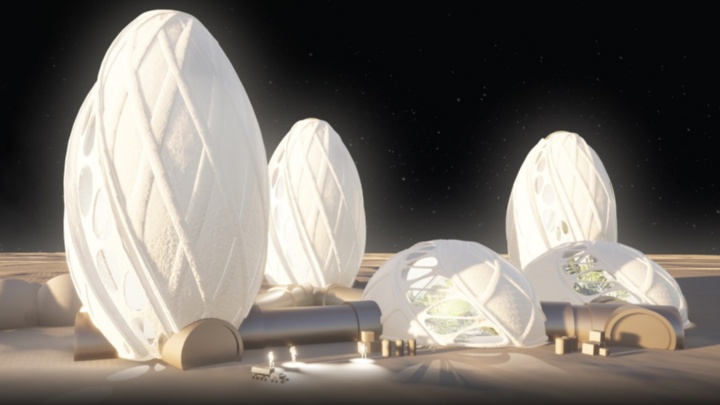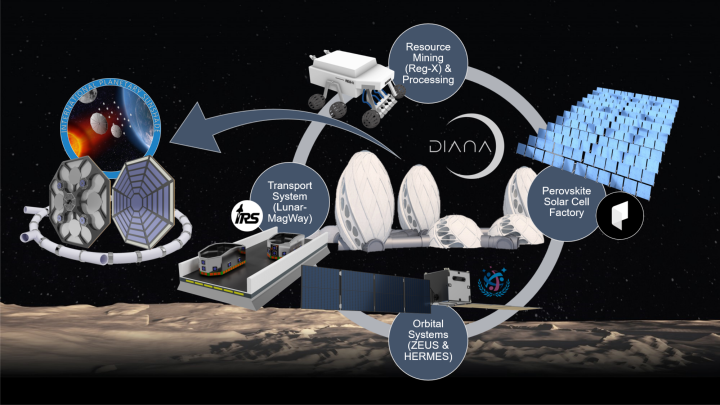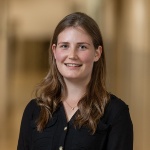The consequences of climate change are being felt worldwide. Space agencies and international research institutions are researching new technologies to protect sensitive ecosystems on Earth. As part of the “International Planetary Sunshade System” (IPSS) study, researchers at the Institute of Space Systems (IRS) are investigating the extent to which sunshades installed in space contribute to reducing global warming.
Denis Acker, doctoral researcher at the IRS, and students from the recently founded university group ASTRAEUS e.V. (Advanced Space Technology Research for Astronautical Exploration of Uncharted Space) have been developing an infrastructure concept for three years, which is intended to secure material for the IPSS concept. The team has showcased their DIANA project at numerous international conferences, most recently at the International Astronautical Congress (IAC) in Milan, where they achieved an impressive second place in the Student Team Challenge. “We beat 70 teams with our concept,” reports Denis Acker. “So far, everything is very theoretical, we haven't built any hardware yet. Although it has not yet been built, it is very close to what will be implemented in the coming years".
Sunshades reflect solar radiation into space
The concept: A moon base, christened DIANA (Dedicated Infrastructure and Architecture for Near-earth Astronautics), with an attached solar park. The mission: Mining and processing resources on the moon for the production of Sunshades. The Sunshades are based on a new technology that reflects part of the sun's radiation in space before it reaches the earth. Researchers in the IPSS project at the IRS are exploring the effectiveness and maturity of this technology. The project is funded by ESA in collaboration with industry partners. “Sustainability plays a major role in our concept,” says Acker. “That's why we want to build an infrastructure where it will be used - on the moon.” This would avoid long transportation routes, rocket launches and the production of CO2 on Earth. The Sunshades will also be manufactured in space, and astronauts will be responsible for extracting the necessary resources. To this end, ASTRAEUS is drawing up plans for a habitable infrastructure on the moon that can sustain itself independently of the Earth.

Living and working on the moon
ASTRAEUS is already planning to minimize the use of earth-based resources in the construction of the DIANA base. Instead, regolith - moon dust and rock - will be used as a building material. DIANA and the solar cells are to be manufactured from 85 percent lunar resources using additive 3D printing processes. "We transport the remaining resources from Earth to make the station virtually 'weatherproof' against the extreme gravitational and radiation conditions present there," explains Acker.
The base will grow from an initial makeshift facility for a maximum of eight people to a small settlement consisting of three towers with space for 100 people and two greenhouses. The researchers also aim to extract oxygen from regolith, which is composed of up to 40% oxygen. Oxygen production is essential for life-sustaining systems such as ventilation and food cultivation. “In addition to oxygen, regolith also contains trace elements that could be promising for a vertical farming concept on the moon,” says Acker. The water supply is sourced from the nearby De Gerlache lunar crater.
Solar cell factory in space
Initially, the station will be supplied by only a few solar energy sources brought from Earth. “We need 1.3 gigawatts of power for the construction of the solar park alone,” says Acker. This is why ASTRAEUS uses nuclear energy resources from Earth in the first construction phase. Once completed, the solar park will be able to provide 17.5 gigawatts of energy over an area of 400 km², roughly the size of Cologne. The start-up Perosol at the Institute of Photovoltaics (ipv) is supplying a solar cell technology based on perovskites that can withstand high levels of radiation in space and could be manufactured primarily using lunar resources.
“We have even devised a back-up during the lunar night,” says Acker. During the two weeks of permanent darkness at the south pole of the moon, the ZEUS satellite constellation supplies the station with sufficient energy. The HERMES constellation ensures communication with Earth - almost in real time with only a minimal time delay of four to six seconds.
Testing technologies for future missions
Construction extends over four phases and takes around 30 years. During this period, transport systems must be established on the Moon, and multiple robotic systems will work in parallel to mine approximately 580,000 tons of regolith. “This is an immense undertaking, but we are convinced that it can be achieved within the timeframe,” says Acker.
The large-scale project could start in 2027, provided that ASTRAEUS convinces the ESA of its concept. “We are currently working with the start-up Imensus to develop a prototype that we can use to investigate the subsurface conditions on the moon and identify ideal mining areas.” To this end, ASTRAEUS is seeking students interested in contributing to the development of electronic hardware and software.

The moon is a springboard for future missions, such as to Mars. The Moon's proximity to Earth makes it the ideal location for testing technologies, simulating scenarios, and preparing them for the uncharted vastness of space.

Jacqueline Gehrke
Online Editor




